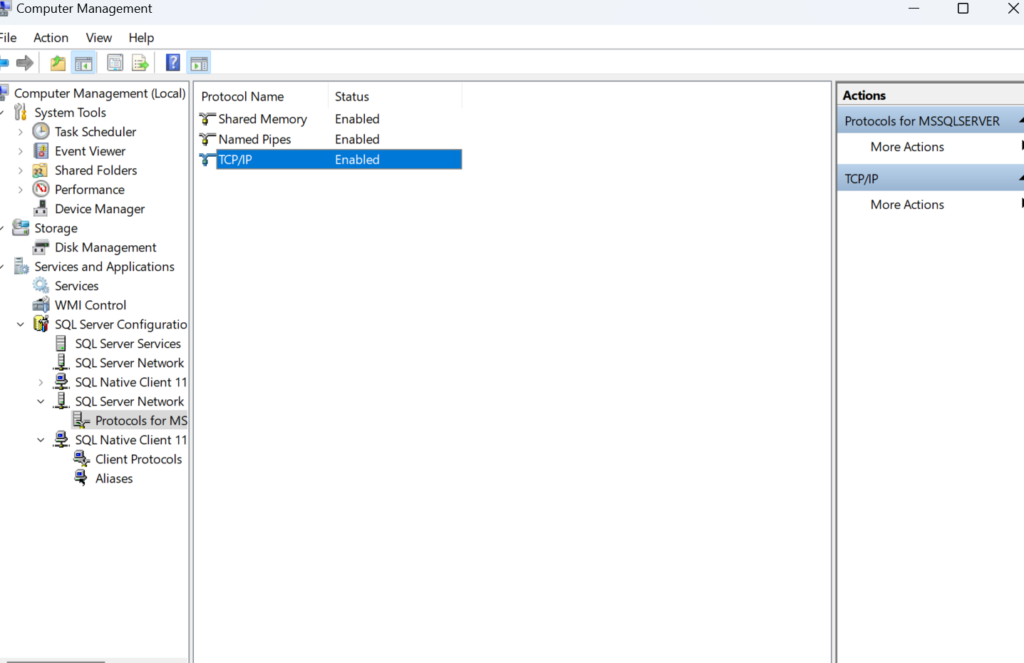A network-related or instance-specific error occurred while establishing a connection to SQL Server. The server was not found or was not accessible. Verify that the instance name is correct and that SQL Server is configured to allow remote connections. (provider: Named Pipes Provider, error: 40 – Could not open a connection to SQL Server)
This can be due to various reasons ranging from network issues, server settings, incorrect connection strings, or even SQL Server service issues. Here are some common steps to troubleshoot and resolve this issue:
1.Verify SQL Server is Running
Ensure that the SQL Server service is running on the server.
- Open SQL Server Configuration Manager.
- Check the status of the SQL Server service.
- If the service is not running, start it.
2.Check SQL Server Instance Name
Ensure that SQL Server is configured to allow remote connections.
- Open SQL Server Management Studio (SSMS).
- Right-click on the server instance and select
Properties. - Go to the
Connectionspage and ensure thatAllow remote connections to this serveris checked
3.Verify SQL Server Configuration
Ensure that SQL Server is configured to allow remote connections.
- Open SQL Server Management Studio (SSMS).
- Right-click on the server instance and select
Properties. - Go to the
Connectionspage and ensure thatAllow remote connections to this serveris checked.

4.Check SQL Server Network Configuration
Ensure that SQL Server is configured with the appropriate network protocols.
- Open SQL Server Configuration Manager.
- Expand
SQL Server Network Configuration. - Click on
Protocols for InstanceName.- Ensure that
TCP/IPis enabled. - If
TCP/IPis enabled, right-click on it and selectProperties. In theIP Addressestab, ensure that TCP/IP is enabled for all appropriate IP addresses.
- Ensure that

5.Verify SQL Server Authentication
Ensure that the SQL Server authentication mode and credentials are correct.
- Open SSMS.
- Right-click on the server instance and select
Properties. - Go to the
Securitypage and ensure that theServer authenticationmode is set correctly likeSQL Server and Windows Authentication mode.

Summary
To resolve network-related or instance-specific connection errors in SQL Server, follow a systematic troubleshooting approach to verify that the SQL Server service is running, network protocols are enabled, firewall settings are correct, authentication settings are appropriate, and connection strings are accurate. Additionally, checking SQL Server logs and testing connectivity.